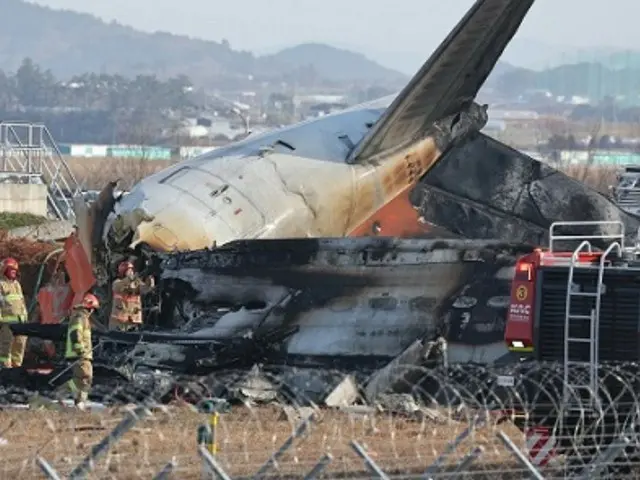It has also been pointed out that in addition to the engine where the bird strike occurred, other engines and braking systems also appear not to have been functioning.
According to the Ministry of Land, Infrastructure, Transport and Tourism on the 29th, the aircraft approached the runway at Muan Airport and attempted to land at around 8:54 a.m. on the same day, and the Muan Airport control tower
At around 8:57, a bird strike warning was issued. The aircraft sent out a distress signal, "Mayday," two minutes later, at around 8:59. It is believed that a bird strike and collision occurred during that time.
At around 9:03, the aircraft landed on runway 19, the opposite direction from the original landing direction (runway 01), without lowering the landing gear. However,
The plane was unable to slow down until it reached the target and struck a structure on the edge of the airport, sparking a fire. Experts believe that the direct cause of the accident was the failure of the landing gear to deploy.
The consensus was almost unanimous. The landing gear must be in place to brake, but the accident occurred while the aircraft was landing on the fuselage, which is essentially the body of the plane, without any braking equipment.
"The video shows that the landing gear did not extend and the speed did not change much when the plane crashed," said Choi Ki-young, a professor of aerospace at Inha University.
If the landing gear does not operate, the engines will reverse thrust and the upper wing panels, which act as air brakes, should rise, but this also did not operate.
"The reason for the landing gear not deploying has not yet been determined, but a bird strike is said to be the most likely cause.
Kim Gyu-wan, director of the flight training school at Hanseo University, said, "When birds such as seagulls get into the engine, the engine is also damaged, and the aircraft that is connected to it is destroyed."
"It could also affect the hydraulic system that was installed in the aircraft. The hydraulic system raises and lowers the landing gear during takeoff and landing, and that part may have been damaged," he told Yonhap News Agency.
However, some have pointed out that even if one of the engines had failed due to a bird strike, the landing gear could have been deployed if the other engine had been functioning normally.
Professor Choi Ki-young said, "It appears that there was a problem with both engines on the plane.
If the engine doesn't work, the whole plane will be shut down and the pilot's commands may not be transmitted." In response, some experts said, "In cases other than bird strikes,
"The possibility of defects or poor maintenance should also be investigated," he said, according to Yonhap News Agency.
"It's extremely rare that it didn't happen. It's difficult to conclude that it was just a bird strike. We also need to investigate whether there was a defect in the aircraft."
Dr. Ahn Oh-seong of the Korea Aerospace Research Institute also said, "The first philosophy of aircraft design is that it will never crash in a single accident.
"It is impossible for such an accident to occur on its own," he said. "Even if one of the engine hydraulic pumps fails to operate due to a physical impact such as a bird strike, the engine will not be able to operate normally.
"The power supply to the landing gear is what powers the landing gear. If that doesn't work, there is also a device called an accumulator, but it is incomprehensible that all three of these have failed," he added.
2024/12/29 21:05 KST
Copyrights(C) Herald wowkorea.jp 83

